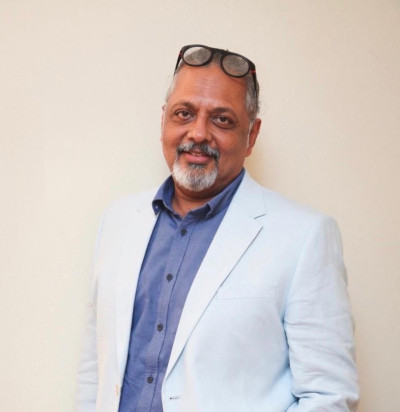Navigating the airwaves: Abe Thomas on radio's resilience in digital era
In an era dominated by on-demand content platforms, traditional radio faces the challenge of staying relevant. Abe Thomas, CEO of BIG FM, shares insights on how radio can compete and thrive in a landscape saturated with podcasts and digital streaming services. From leveraging its strengths in local storytelling to embracing evolving technologies, Thomas outlines strategies for radio’s continued success and evolution. Edited excerpts:
On-demand platforms like podcasts offer vast content diversity and personalised listening experiences. How can radio compete and sustain in this landscape?
With the rise in on-demand content, podcasts have carved out a distinct niche, exploring a plethora of topics tailored to individual tastes. However, challenges of podcasts include discoverability and monetization. This is where radio scores by offering curated podcast selections. Radio is able to better drive discoverability, audiences and monetization, given its existing relationships. This symbiotic bond keeps radio relevant in a crowded space, offering listeners the convenience and familiarity they desire.
Also, radio has been the pioneer of storytelling, and our properties like Yaadon Ka Idiot Box with Neelesh Mishra and Suhana Safar with Annu Kapoor enjoy a loyal fan base like no other.
Radio's live nature, local focus, trusted personalities, and accessibility across demographics (including those with limited internet access) still hold value. How can radio leverage these strengths?
True, these are definitely the medium’s strengths. Radio continues to grow in reach and time spent listening in Tier 2 and Tier 3 markets, and advertisers are leveraging its strengths to create impact. Top markets being Nagpur, Jaipur, Surat and Indore.
In this growing digital era, the attempt is to enhance radio’s reach and accessibility by adopting a multi-platform strategy. Regardless of the device constraints, the aim is to be more platform-agnostic in approach. Also radio’s local insights help in generating local content and local storytelling which other digital platforms are unable to do.
With evolving technologies and audience preferences, what adaptations or innovations can keep Indian radio relevant and engaging in the future?
Emphasising radio's ability to influence outcomes, the focus is on driving tangible results through meaningful content and delivery strategies. New distributions like digital audio broadcasts, FM receivers on mobile phones, etc. can keep radio relevant in the coming years. It’s also worth noting that live web radio remains a prominent feature internationally, but it's currently non-existent in India. This presents a significant opportunity for growth. Going forward, investing in live broadcasting can be a pivotal step.
Also, at BIG FM we have witnessed a substantial growth of our solutions business. Radio + Digital + Onground has become an integral part of our offerings for providing comprehensive solutions for our partners.
Is the restriction on private FM news broadcasting unfair, hindering diversity of information and public discourse? Given ongoing discussions and TRAI recommendations, do you anticipate any policy changes allowing private FM news in the near future?
The lifting of constraints in the radio industry presents an outstanding opportunity for growth by introducing new programming formats, attracting a new set of audiences and thereby drawing in new advertisers. Radio, by virtue of being extremely local by nature, will have to deliver at a more local and micro-local level; it can’t be national or regional. We are optimistic that the constraints will be removed gradually, and a lot more news and current affairs programmes will be the start of a new genre on the medium.
How can radio stations differentiate their advertising offerings to attract advertisers and capitalise on their unique strengths like live broadcasting and local reach?
Radio stations can implement demographic segmentation and targeting, followed by psychographic targeting, to tailor advertisements to specific audience groups. Cohort marketing strategies can also be employed to further refine these targeting efforts. For instance, our offerings like Slay Nation and BIG Street are examples of targeting specific cohorts. Additionally, we are offering packages for trade marketing and providing a platform for different psychographic groups attracting advertisers seeking a more targeted approach. By capitalising on these strengths and customising advertising offerings, radio stations can efficiently attract clients and maximise their advertising revenue too.
What trends are emerging in radio advertising formats and technologies, and how can they be leveraged to maximise ad revenue while improving the listener experience?
Through its various IPS and campaigns, radio has been consistently ensuring interactivity and engagement across platforms. Our properties such as 'BIG Antakshari' focus on increasing engagement, looking at lead generation. 'Super Duper Dhamaka', and 'Suhana Safar with Annu Kapoor' exemplify digitization by adoption of artificial intelligence and gamification which is gaining remarkable momentum. Notably, our BIG World offerings focus on content and connections for a deeper audience engagement – from on-ground to podcasts to social commerce, there is a wide spectrum of offerings to capitalize on, bringing in sponsors and revenue for us. By embracing tech advancements, radio can maximise ad revenue and enhance listener experience with innovative and interactive programming.






Share
Facebook
YouTube
Tweet
Twitter
LinkedIn